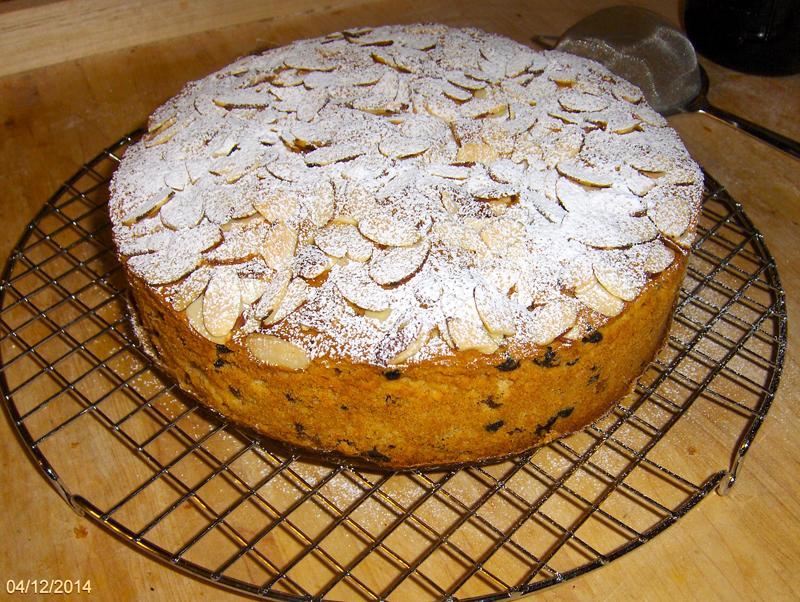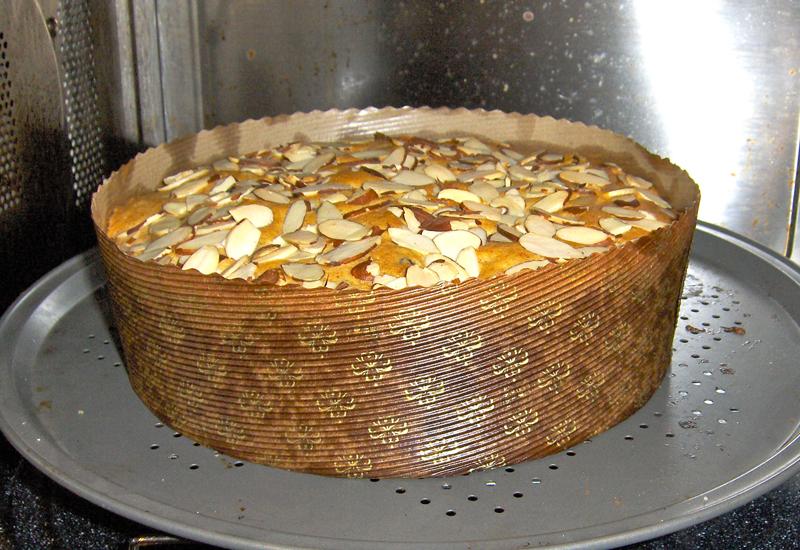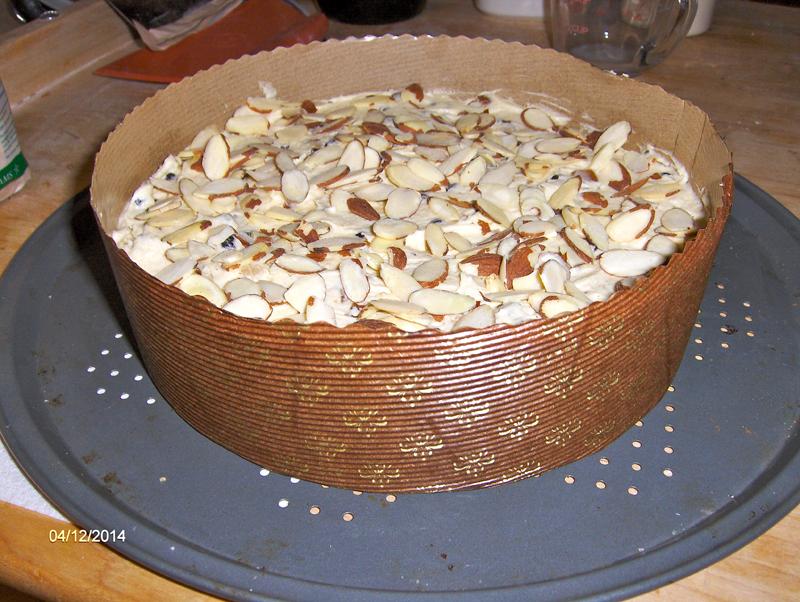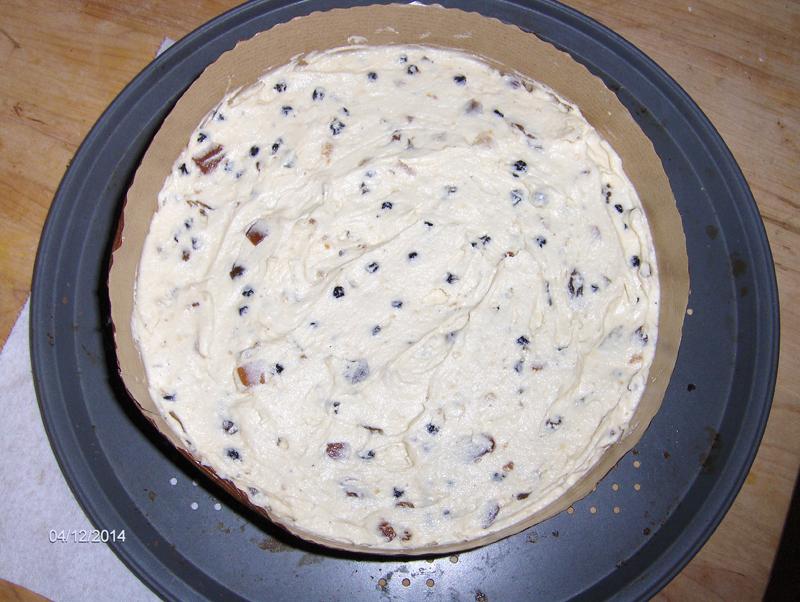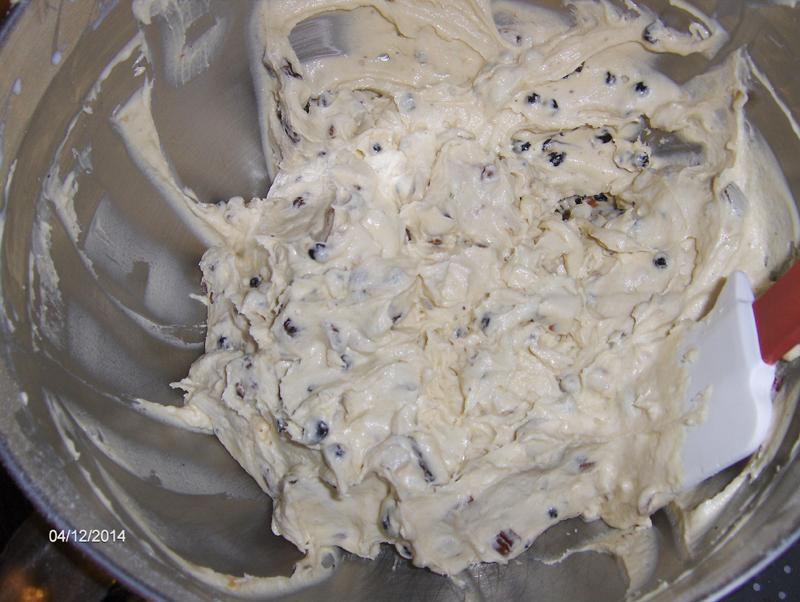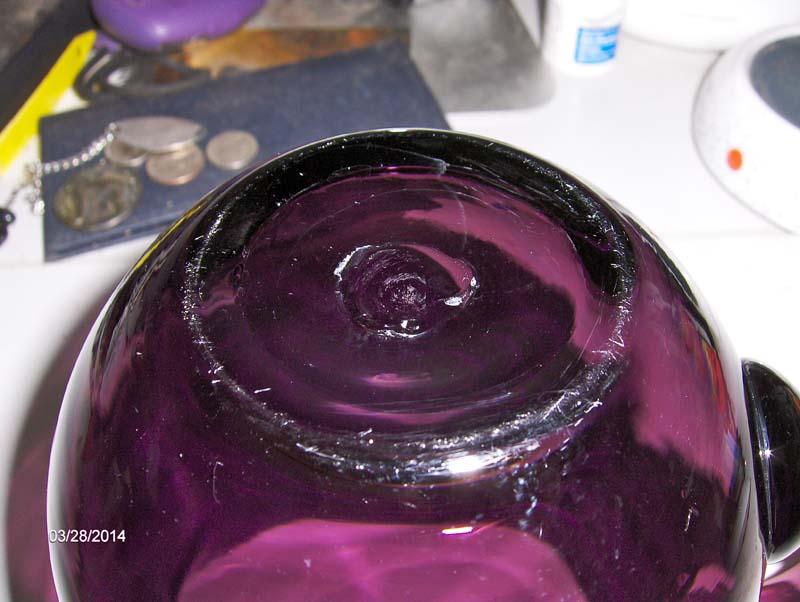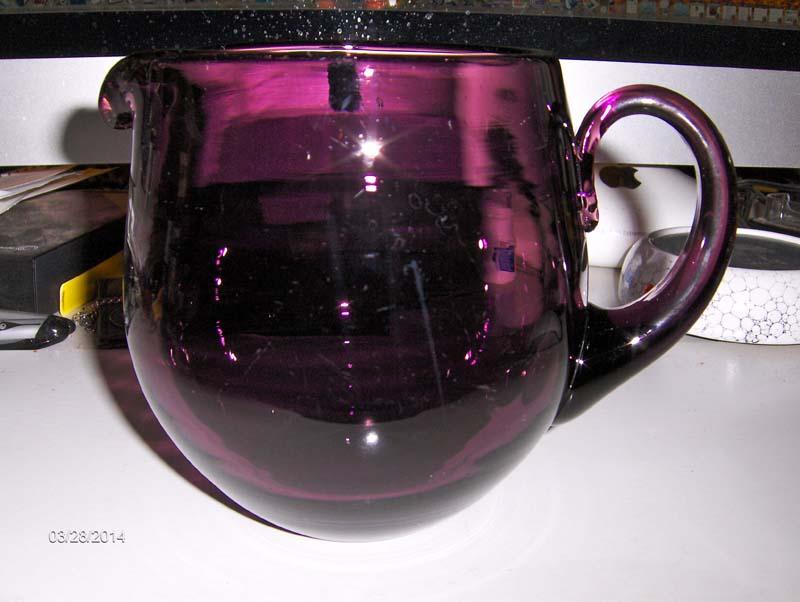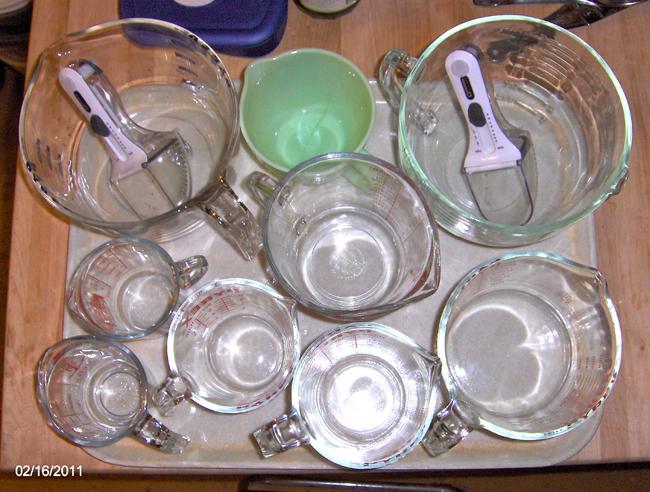-
Posts
11,034 -
Joined
-
Last visited
Content Type
Profiles
Forums
Store
Help Articles
Everything posted by andiesenji
-

Copper vs Stainless Steel Clad Cookware: Is it worth the $$$?
andiesenji replied to a topic in Kitchen Consumer
I like the "feel" of cooking with copper and I have used (and re-tinned) really old copper cookware, now have the stainless lined and there are some things that FOR ME PERSONALLY, turn out better than when I use other pans. That is, certain sauces that are prone to scorch if there is a hot spot in the bottom of a pan or skillet, milk custards, ditto. When I want something to turn out as "perfect" as I know I can make it, I use the copper. I have experienced the reactions in certain foods and know what to expect. I prefer cast iron for some processes - enamel cast iron for others. And still other things require a non-stick skillet, but not many. And as my cookware is mostly hanging out where anyone can see it, any time, I am proud of the way it looks. I'm selling a few pieces on ebay, but none of my "favorites." Soon I will be selling a huge, old and very heavy, round-bottom preserving pan. I hate to part with it but I can barely lift it when it is empty and I no longer have the free-standing propane burner with the ring in which it sat securely. It's over 100 years old and cooked a lot of jams, jellies, preserves, candy & etc. -

Your Daily Sweets: What are you making and baking? (2014)
andiesenji replied to a topic in Pastry & Baking
I'm making scones - the dough is at present "resting" - chilling in the fridge prior to scooping and forming. I have resurrected an old recipe that uses no butter - only heavy cream (called "top" cream in the original recipe) from some time in the late 1920s or early '30s, supposedly copied from "Weldon's favorite cakes and scones" by a "cook at Merton's, Mousehole, Cornwall, 1938." -
Sometimes yogurt becomes "grainy" after being frozen. I notice this most with "low-fat" yogurt. As I make my own and almost always use full-fat milk, it does not seen as pronounced.
-
To the "use by" or "best by" dates for yogurt, you can add at least a couple of weeks, or even longer.
-

Your Daily Sweets: What are you making and baking? (2014)
andiesenji replied to a topic in Pastry & Baking
You can call them "Fusion" brownies. A true instance of two cultural food favorites being "fused" into a cohesive new flavor excitement. -
I've had this problem in the past. For the cup or so of "brewed coffee" I have substituted brewed tea - or roobios (red tea), stout - which really boosts the chocolate flavor - also carob powder mixed into hot water, strained and allowed to cool - the carob stuff I get at the health food store is quite grainy. You can also use diluted liqueurs - I had some Godiva choc liqueur someone gave me and as I don't drink alcohol, I used it in cakes and cookies.
-

Your Daily Sweets: What are you making and baking? (2014)
andiesenji replied to a topic in Pastry & Baking
You can use any dried fruit - chopped to the size of (smallish) raisins. Candied ginger works fine - I've made it with ginger and dried apricots - those flavors "marry" well - just use the same volume (not by weight) of dried fruits and make sure they are distributed evenly throughout the flour mixture before adding to the (very stiff) batter. You don't want big chunks of fruit that will not allow nice even slices. I've used the same basic recipe to make a "tropical" cake with finely chopped pineapple and mango. I added the following statement when I posted the recipe on my Facebook page: This is a very "forgiving" cake. You can add flavors to it and it is not sensitive at all. On one occasion I had the power go off right in the middle of baking - I left it in the oven and restarted the oven and finished baking it when the power came back on two hours later. The cake was fine. Try and do that with most cakes - box cakes - and one would have a mess. On one occasion, when I was pressed for time, I put the cake in the microwave (using the paper baking mold) for 8 minutes and then transferred it to the regular oven (preheated to 325°F) and finished baking it for about 35 minutes. I tested it with a probe thermometer to make sure the center was 205°F. It turned out quite nice. -

Your Daily Sweets: What are you making and baking? (2014)
andiesenji replied to a topic in Pastry & Baking
Yesterday I made a traditional Dundee cake. No flavoring, no vanilla, no citrus zest, just the favorite "tea" cake of my great grandmother, grandmother and my aunts and great aunts, when I was growing up. I "inherited" this recipe - but "tweaked" it a bit because the original made 3 large cakes. DUNDEE CAKE 1 Cup Butter 1 Cup Sugar 4 EGGS Large 2 1/2 Cups Flour All-purpose 2/3 tsp Salt 1 1/2 tsp Baking Powder 1 Cup Sultanas - golden raisins 3/4 Cup Mixed Peel 1/2 Cup Currants (Zante) 1/2 Cup Milk 2 TBS Sliced Almonds Method: Grease and flour an 8 inch cake pan or line it with parchment paper. (I now use the disposable paper baking molds, 8 inch round, which do a beautiful job - they are available from Amazon.) You can also use smaller pans or molds for a taller cake - or use a loaf pan or pans. Preheat your oven to 325°F. Use a medium-large bowl - 2 quarts or larger. Cream together the butter and sugar until fluffy. Add the eggs, one at a time, and beat the mixture until all are blended in and the batter is smooth. Sift the flour, salt and baking powder together Add the sultanas, mixed peel and currants to the flour and toss to coat the pieces and make sure they are not clumped together. (They are not traditional, but dried cranberries are lovely in this cake.) Add this to the batter, 1/3 at a time, stirring well until blended before adding more. Add the milk and stir in well. The batter should be fairly stiff but if it appears too stiff, or dry and "ragged" add 1 or 2 additional tablespoons of milk, blending well after each addition. Transfer the batter to the cake pan, spread to edges and level the top. Sprinkle on the sliced almonds. Place on center rack in pre-heated oven and set timer for 80 minutes. At the end of this time check for doneness with a "cake tester" or better yet, a probe thermometer - the finished temp should be 205°F. Remove from oven, place pan on cooling rack for 50 minutes. Invert onto one plate and then turn it again so it is right-side up on your serving plate. If using the paper mold, just strip off the sides and transfer to your plate. Lightly sift powdered sugar over the top after the cake has fully cooled. -
There are a lot of people in the city who are completely baffled by the complaints and THEY live right in the neighborhood where the plant is sited. Employees are unhappy because they want to keep their jobs. The local news people (from KCAL Ch. 9) reported that they tried to find the people (They can find only FOUR households that complained but the city refuses to release the addresses.) who were complaining and they tried to canvass at neighboring homes but could get no indication that ANY of the people in the immediate area were the people who actually complained. Five media people have been given tours of the plant and none of them complained about a "stench" - only a little burning of the eyes, easily prevented by the goggles handed out and those people were right next to the open vats of crushed peppers. Here's a more complete article. An interesting side note: Irwindale for many years did no pursue action against a wire manufacturing company that was repeatedly, over more than a decade, dumping polluted water containing high levels of acidic TOXINS into storm drains and also onto open ground where it could seep into ground water. It took action by LOS ANGELES COUNTY to get the company supposedly into line - and they got a FINE of less than $2K!. So when they claim to be so "caring" of the city's "air quality" And a huge gravel pit - that could be seen from the 201 Freeway, was always causing dust clouds to drift over the residential areas and sometimes affected visibility on the freeway itself.
-
This news is so difficult to believe that I have been wondering about it all day. I followed his "Bento Box" lunch preps for PJ with great interest - at least a couple of years ago. His food prep was so imaginative for such a mundane thing as "lunch" for a child.
-
I won't use palm oil because to me it has an unpleasant flavor and when I did buy it, well within the "sell-by" date, one jar was horribly rancid when opened - my entire kitchen stank. (Also for other reasons but will not comment here.)
-
Up until a few years ago, my cousins used to send me a home-cured ham every year - usually in November as it was easy to store at room temp until ready to use. They do require "par-boiling" (simmering) in multiple changes of water - after being pierced all over with an ice pick - or a sharp, long-tined chef's fork if you have one. I use my electric roaster. Change the water every 2 hours, total 8 hours for an 18 pound ham. Reduce the time for smaller ones. Some people like to just soak them but this takes 2-3-4 days (depending on size) in cool water (40 degrees F.) with the water changed ever 6-8 hours. Then a final (before the "real" cooking) treatment - slow simmering in Coca Cola for a minimum of an hour (put the ham in a pot and pour in the cola half way up the ham, turn it often). Rinse and the proceed with treating the ham with a mustard rub and a brown sugar coat and then roast it until the coating is like candy and the internal temp is 120 degrees. By this time the ham is fully cooked so it really just has to heat through and the temp will rise a bit after it comes out of the oven and is "resting." If you think this sounds odd - Coca Cola will extract a lot of salt - much more than just plain water.
-
In my email this morning, from ChefShop.com an announcement of the celebration in NYC of Marcella Hazan's 90th Birthday during the week of April 15. Also the launching of a Scholarship in her name at the International Culinary Centers both in NYC and in California. Marcella Hazan Scholarship and celebration information.
-
- 1
-

-
I wish I could get out of TJs for $70.00. All the folks in the store know me by name and seem to delight in pointing out new and interesting products.
-
As I stated back near the beginning, there are many quick breads that BENEFIT from not being worked in a power mixer. I have a recipe on my blog for scones that has instructions for using a food processor BUT ONLY because most people want quick, effortless results and are willing to settle for an end product that is not quite "right" and certainly would never have passed my great grandmother's "test" for flakiness. Most of the time when I make them, unless I am in a big hurry and have to make several batches, I do them entirely by hand. The result is a lighter, flakier and more traditional result, particularly when one has to use regular - all-purpose flour. Too much "working" the flour, after the liquids have been added, will develop the gluten too much and the end results will be heavier. This is seen all the time in commercial "scones" sold in bakeries and tea shops, prepared in large batches in mixers and I personally would not even call them "scones" because to me, they do not fit the category. If you can get "soft" flour or pastry flour, with less gluten and less protein, the dough can take a bit more handling, but it is still better to keep handling to a minimum. I learned to "cut" butter into dry ingredients with two knives but now I use a pastry blender to get the appearance of "coarse crumbs" and then that goes into the fridge to keep the stuff cold. Here is a scone recipe I have been preparing since I was a child - my great grandma's favorite, which does not work well with machine mixing. Cream Scones Great Grandmother's favorite 2 cups flour 2 Tablespoons sugar 1 Tablespoon baking powder 1/2 teaspoon salt 1/4 cup butter COLD (unsalted) cut into 1/2 inch cubes 2 eggs 1/2 cup cream (light cream or half & half) 1 teaspoon vanilla extract Sugar for sprinkling. Preheat oven to 450° F. Sift dry ingredients together into a large bowl. Cut butter into dry ingredients using a pastry blender, a fork or two knives. The texture should look like coarse crumbs. ** Place bowl in the fridge. Break the eggs into a measuring cup beat with a fork until light yellow and frothy. Add the cream and blend well. Add the vanilla extract. Retrieve the bowl with the dry ingredients. Make a well in the center and pour in the liquid mixture. Using a large fork (I use a Danish dough whisk) stir the dry ingredients into the liquid just until the dough comes away from the sides of the bowl and there are no pockets of dry ingredients. Turn dough out onto a lightly floured counter. Divide into two, pat out into two rounds, about 3/4 inch thick. Cut each round into quarters. Transfer to baking sheet lined with parchment. Brush tops with egg wash and sprinkle with a little sugar. Bake for about 15 minutes - check at 10-12 minutes they should be lightly browned. Optional: You can add raisins or cranberries or other dried fruits - add to the dry ingredients AFTER cutting in the butter.
-
I often do baked goods - especially quick breads that need to be tender and mixers overwork the dough. I recommend a Danish dough whisk. I have been using one for many years and it blends dry ingredients with liquids much easier than other whisks (or spoons, forks, etc., without overworking the dough. However, it is also very handy for getting yeasted doughs blended - when you reserve part of the flour to knead into it after it has begun to ferment - the (sponge method (aka "biga"). I have posted about them in the past and posted photos of my whisk collection - In fact I used one this morning to make cornbread and a little while ago to mix dough for scones (dough now "resting" in the fridge). I have arthritis in my hands and this is much easier for me to use than other implements. Here's what some other people think. Here's the link to the bigger one on Amazon - I recommend the big one!
-

Yard Sale, Thrift Store, Junk Heap Shopping (Part 2)
andiesenji replied to a topic in Kitchen Consumer
I got this Sunday, at a yard sale a few doors down as I was on my way home from a birthday breakfast (I'm officially 75). It was covered with crud - I thought it was brown. Finally got around to putting it through the dishwasher and IT IS AMETHYST! Hand blown, with a clean pontil/punty on the bottom. One or two small bubbles but otherwise very nice. It's heavy so I am assuming some lead content. No marks. I love small pitchers. This one holds a quart with 1 1/2 inches of headroom. -
I agree. I live in the high desert in southern Calif. The amount of liquid taken up by dry ingredients can vary considerably and using the big measures as the mixing bowl makes it easy to see what is happening in the bottom - to make sure there are no "pockets" of dry ingredients hiding in the "corners" and more liquid can be added. I have a friend who owns a bakery cafe and he says sometimes, especially when we have high winds and the humidity is in the single digits, he just uses his formulas as a suggestion because the batters always take up more liquids. He tried a new formula for oatmeal/bran muffins that was much too stiff and dry so he ended up using 1 1/2 times the liquid called for in the formula. (Bran and oatmeal really soak up a lot of liquid.) They were still too dry for his liking so he added drained crushed pineapple to the next batch and they turned out perfect.
-
I think some of the mugs at MUG HEAVEN will fit your requirements. I have two or three - 16 oz Sedona moon, and Ocean moon and one of the tankards - Cobalt mocha - that I use for iced coffee in the summer.
-
I've got a lot of measuring cups for liquids. I use them all - some are more useful for opaque liquids - like milk, while others work better for clear liquids. I guess the ones that get the most action are the Pyrex and Anchor Hocking glass. I have multiples of each of these. They are microwave save and can go into the dishwasher - some of the plastic ones INCLUDING THE OXO do not fare well in my dishwasher. On several, I have compared the measurements to WEIGHT measures and have used a file to scratch a mark on the measure, and a line of paint to make it easier to see.
-
I used them for French onion soup a week or so ago when some friends dropped by. They don't like the crouton and cheese on top so this was really simple to ladle the soup into the mugs and heat in the MW - after the soup has cooled a bit, it can be sipped directly from the mugs and the solids finished off with a spoon.
-
I have 4 sets of these which allow plenty of headroom in case the liquid boils in the microwave. OR you want to add a lot of foamed milk to your latte or cappuccino (or anything else that goes with coffee or tea) I've used them for chai, caffe latte, SOUP, hot milk. I have several 16 ounce mugs, of various shapes and sizes and I much prefer the larger capacity - 18 oz or more. Every time I try to reheat a normal (for me) mug of coffee in the microwave, it boils over. Has ever happened in these.
-
I dry it until it feels dry and breaks up easily. I put it in a container and into the freezer until ready to use so it does not become rancid. When drying it in the oven, I set it for 140 degrees F.
-
My experience has been that whole almonds are too greasy - I don't like the results in some baked goods - the flour or meal from the solids after much of the fat has been expressed in the "milk" production is much better for my purposes. After I process it, I spread it on a tray, cover it with a screen and dry it in the dehydrator - sometimes in the oven on a very low setting. It cakes as it dries and has to be broken up so it dries evenly.
-
I dry the solids remaining from making almond milk, grind it as fine as possible and use it for baking. It absorbs quite a bit of liquid so you may have to add a bit more when using it in recipes. Try using it in pancakes to test. I have a Soyabella that I use for making nut milks and have made my own hazelnut flour, cashew, sunflower seed and pumpkin seed meal. I've also used it for making coconut milk and coconut flour.



